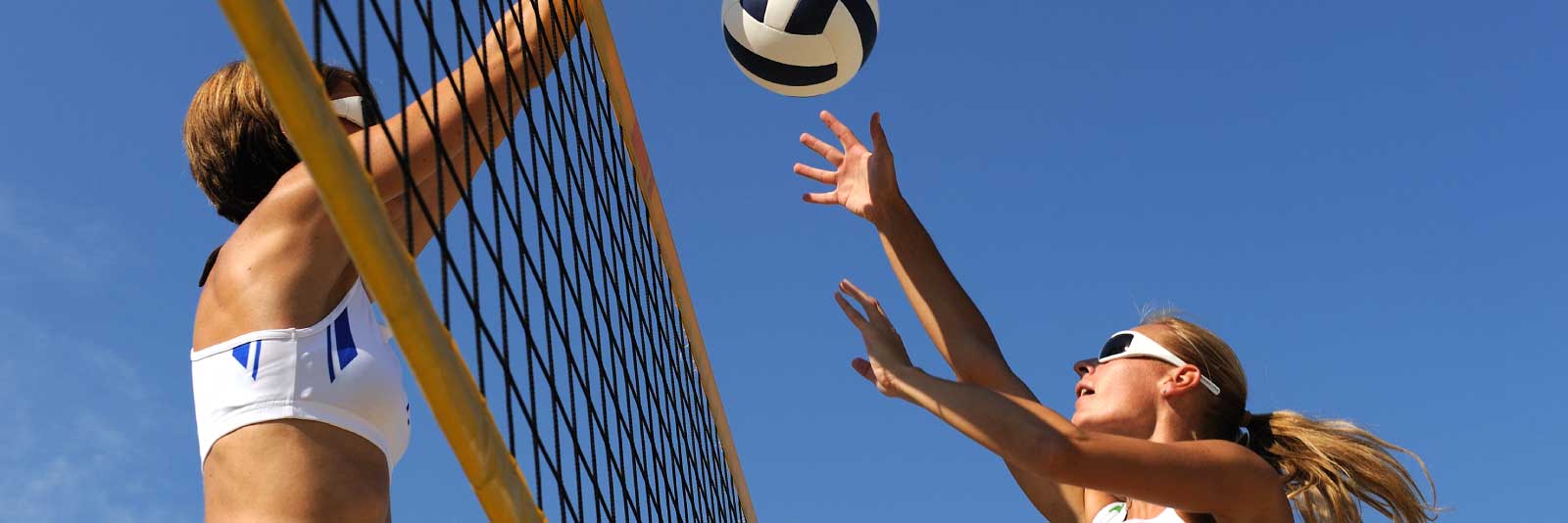Full List of Colleges with Beach Volleyball Programs

As a growing collegiate sport, beach volleyball is currently offered by about 90 colleges across the NCAA Division 1, Division 2 and Division 3 levels, as well as the NAIA and the California Community College Athletic Association (CCCAA). However, more and more colleges are planning to add a beach volleyball program in the next few years. We’ve included a list of current beach volleyball colleges and we’ve also noted the institutions that will be adding a program in the upcoming seasons. Use these lists to help you research schools and find your best college fit, athletically, academically and socially.
Quick Links
D1 beach volleyball colleges: Join the elite beach volleyball players
There are about 54 D1 beach volleyball programs, making it the largest division for beach volleyball. D1 teams are known for their elite-level of play, physicality and power. This is the most competitive level athletically, though you might see some high-level D2 teams that are similar to D1 programs. At the D1 level, expect to play your sport year-round, with a small amount of time leftover for activities outside of beach volleyball and your schoolwork. Athletes who love the thrill of playing against the best competitors in the game usually opt to compete at this level.
Insider tip: D1 recruiting will generally start earlier than the other division levels. If you’re interested in playing at a Division 1 beach volleyball college, you should start initiating contact with college coaches your sophomore year and, at the latest, early your junior year.
D2 colleges with beach volleyball: Balance athletics and academics
D2 beach volleyball colleges are still highly competitive programs that recruit top athletes. The biggest differences you’ll see between D1 and D2 teams are the depth of the bench and, in many cases, the time commitment to your sport. In most cases, D2 athletes will have a little more time in their schedule to focus on academics or even pick up an extracurricular activity in the off-season. While there’s still 11 D2 schools offering beach volleyball, that number will continue to grow over the next few years.
D3 beach volleyball colleges: Get a well-rounded college experience
At the D3 level, there are only three colleges that currently offer beach volleyball. However, D3 schools have a lot to offer to student-athletes, and they are worth pursuing. D3 student-athletes have the most flexibility in their schedule to pursue other extracurricular activities outside of their sport and academics. Furthermore, some of the most academically competitive schools are found at the D3 level, ensuring student-athletes get a great education while continuing to play the sport they love.
Insider tip: D3 schools technically don’t give out athletic scholarships. However, they do provide other forms of financial aid, including academic scholarships and merit- or need-based aid. Don’t let the initial price tag deter you from D3 schools.
NAIA beach volleyball colleges: A unique college experience
For many student-athletes, the charm of the NAIA comes from its overall flexibility between athletics, academics, a social life. The athletic competition is usually compared to a D2 or upper-level D3 school, and the ability to have a well-rounded college experience is similar to the D3 level. While there are only about two NAIA beach volleyball colleges at this point, more and more NAIA schools will be adding beach volleyball in the upcoming years. It’s worth your time to research those schools and see if NAIA might be the best fit for you.
College beach volleyball rankings. What are the best beach volleyball colleges?
Student-athletes and their families consider a variety of factors when researching colleges, including cost, academics, size and location. NCSA has developed a proprietary Power Rankings system, which analyzes these factors to rank the over 70 four-year NCAA and NAIA beach volleyball colleges and determine the top 10 programs across all divisions.
- University of California – Los Angeles (UCLA)
- University of California
- Stanford University
- Florida State University
- University of Southern California
- Pepperdine University
- University of Washington
- California State University – Long Beach
- University of California – Davis
- Loyola Marymount University
View the complete NCSA Power Rankings list of top women’s beach volleyball schools.